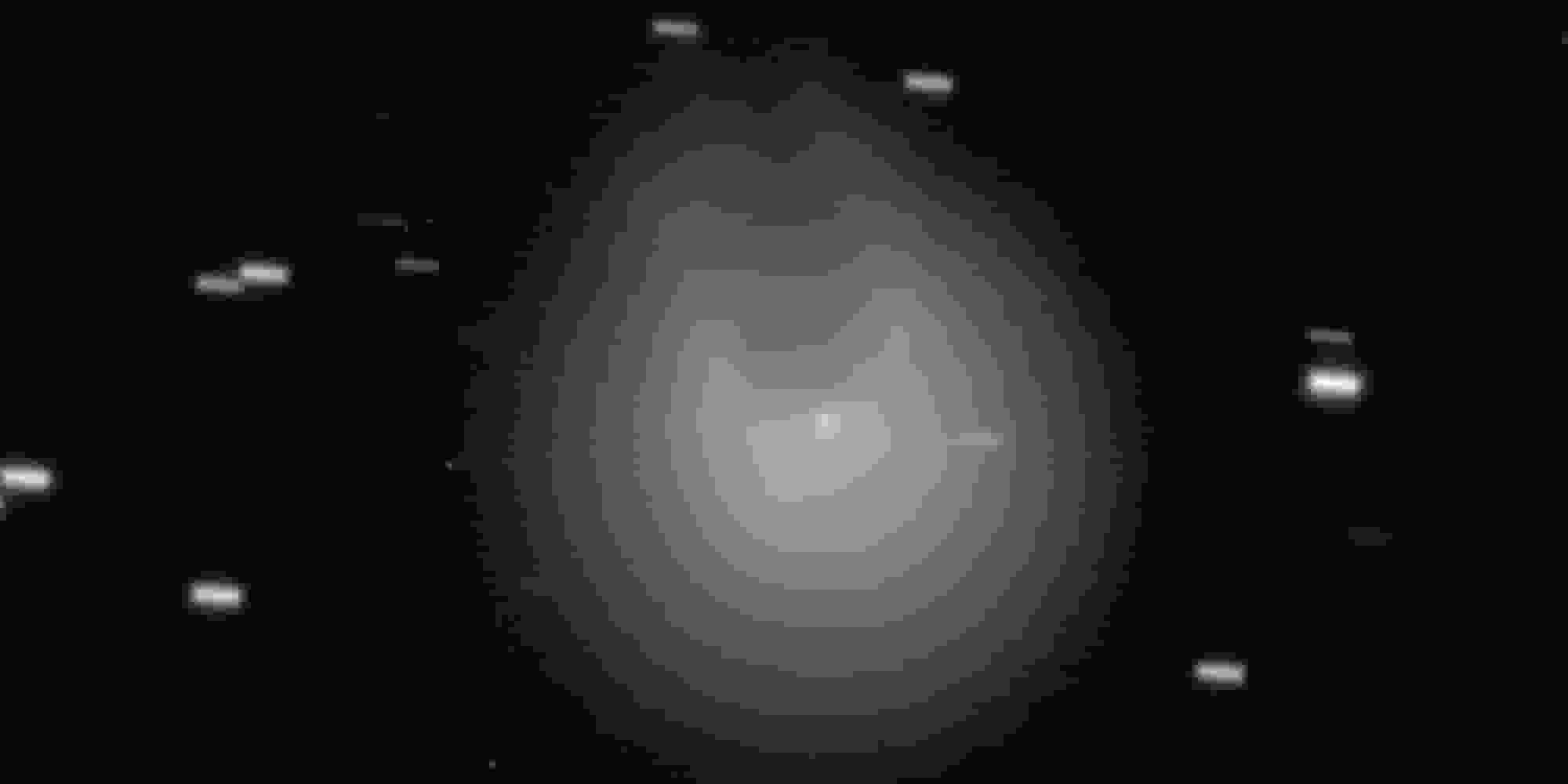As it continues to speed toward the sun, the big volcanic comet 12P/Pons-Brooks, which explodes with enormous horns, has exploded for the third time in the last five months.
On Halloween, a volcanic “devil comet” hurtling toward Earth erupted once more, sprouting new “horns.” This was the third such eruption since July and the second in as many months. It serves as a warning that the comet is getting more volcanically active as it gets closer to the center of the solar system.
The comet, known as 12P/Pons-Brooks (12P), is classified as a cryovolcanic comet—a cold volcano. Similar to other comets, 12P has a solid core, which is a hard, frozen shell that is packed with gas, dust, and ice. This nucleus is encircled by a fuzzy cloud, or coma, that is composed of components that escape from the comet’s interior.
However, in contrast to non-volcanic comets, solar radiation has the ability to superheat 12P’s interior, building pressure until it reaches a point where it breaches the nucleus’ shell from the inside out, releasing its frozen contents into space. The comet’s coma enlarges and gets brighter as a result of these explosions because it reflects more sunlight back toward Earth.
Famous “horns” of Satan are formed when the comet erupts; these are caused by an odd “notch” on the surface of 12P’s large nucleus, which is about 10.5 miles (17 kilometers) across. This notch prevents cryomagma from flowing out of the comet into space and causes the comet’s expanded coma to grow in an uneven manner.
When 12P’s asymmetric coma expanded to a width greater than 7,000 times that of its core on July 20, scientists witnessed the planet blow its top for the first time in 69 years.
According to Richard Miles, an astronomer with the British Astronomical Association who studies cryovolcanic comets, the comet’s coma has expanded more than 7,000 times broader than its core, which is believed to be about 10.5 miles (17 km) in diameter. This was revealed in an email to Live Science.
Interestingly, though, the comet appears to have developed horns due to an irregularity in the form of the extended coma. According to Spaceweather.com, other analysts have also drawn comparisons between the misshapen comet and the famous Star Wars spacecraft, the Millennium Falcon.
According to Miles, there is probably a form irregularity in 12P’s nucleus, which accounts for the comet’s peculiar coma shape.
Experts then witnessed the comet erupt with much more force on October 5.
The comet got dozens of times brighter due to the increased light reflecting from its extended coma, and on October 5, scientists spotted a big outburst from 12P, according to the British Astronomical Association (BAA), which has been constantly watching the comet.
The comet’s coma continued to grow over the following few days, forming its “peculiar horns,” according to Spaceweather.com. Certain analysts made light of the fact that the comet resembles a science fiction spacecraft, such as the Millennium Falcon from Star Wars, due to the coma’s asymmetrical appearance.
Furthermore, while 12P got about 100 times brighter than usual last week on October 31, amateur astronomer Eliot Herman observed another outburst, according to Spaceweather.com.
Herman told Spaceweather.com, “On Halloween, the devil burst forth again with a large outburst that continued into the next day.” He said that further studies revealed that its coma had greatly extended and that its horns had grown again, but they were not as noticeable as they had been in earlier eruptions.
Because 12P orbits the sun in an elliptical pattern, it is first drawn near to it and then hurled back into the outer solar system, where it wanders slowly before finally returning to the inner solar system. The orbit of the green comet Nishimura, which executed a similar slingshot maneuver around the sun in September, is very similar to this one.
For 12P, a full orbit of the sun takes about 71 years, the majority of which is concealed in the outer solar system. Consequently, the comet is only visible to astronomers at its current closest approach to the sun. This is now the case.
According to TheSkyLive.com, 12P will perihelion, or be closest to the sun, on April 24, 2024, at a minimum distance of 72.5 million miles (116.7 million kilometers), making it closer to the sun than Earth but further away than Venus.
The comet will pass by at its closest point to Earth on June 2, 2021, after slingshotting around the sun. At that distance, it will be approximately 1.5 times farther from Earth than the sun, or 144.1 million miles (231.9 million km), as it makes its way back out into the outer solar system. SkyLive.com states that it will stay there until 2094.
As comets approach the sun, more light is reflected from their comas, making them seem brighter in the night sky. This indicates that there’s a good probability it will pass Earth in late May or early June and be visible to the unaided eye.
As 12P approaches the sun, it may also often flash its sinister fangs as increasing solar radiation heats its frozen interior and increases the likelihood of outbursts.




![Tyson Foods Plant [Photo: Food Manufacturing]](https://southarkansassun.com/wp-content/uploads/2023/08/iStock_1185520857__1_.5e441daa51cca-600x337.jpg)








![Silverado Senior Living Management Inc. [Photo: Los Angeles Times]](https://southarkansassun.com/wp-content/uploads/2023/10/download-6-4-600x337.jpg)

![China's Wuhan Institute of Virology [Photo: Nature]](https://southarkansassun.com/wp-content/uploads/2023/09/d41586-021-01529-3_19239608-600x337.jpg)















